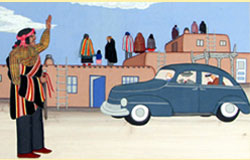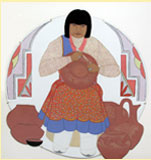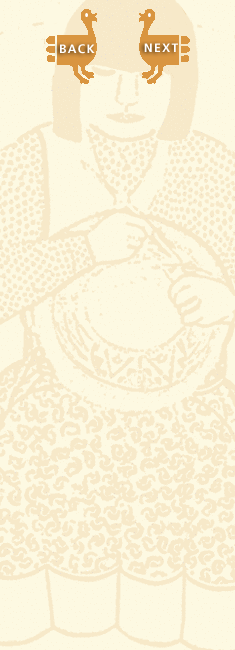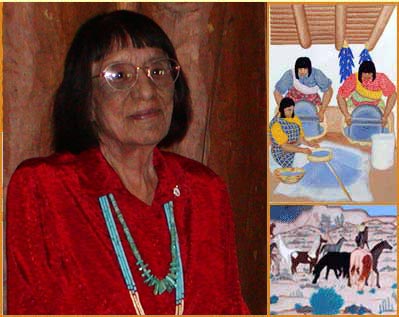 |
|||||
 |
 |
|

 |
 |
 |
 |
 |
 |
 |
 |
 |
 |
 |
 |
 |
 |
 |
 |
 |
 |
 |
 |
 |
 |
 |
 |
 |
||
|
“This period of my life at Bandelier, I figure, I’ve learned more about my own people…than I would have…and I appreciate what the old ones have tried to pass on…I want the earth to remember me through my work…”
|

| At five, Pablita Velarde attended St. Catherine's Indian Boarding School in Santa Fe. She transferred to the Santa Fe Indian School where she was a student of Dorothy Dunn. Dunn had established the first fine arts program and painting department at the school. Verlarde was one of the first female students in the program. She was encouraged to develop her artistic ability, even though in her culture at that time painting was not considered a suitable career for girls. Pablita Velarde wanted to be a painter like Tonita Peña of San Ildefonso Pueblo. Pueblo life, its people, buildings and childhood stories fueled her artwork. Velarde combined elements from different pueblos. Her work shows the many roles within Pueblo society in the early- to mid-1900s. They provide a window into traditional Pueblo life. |

|
The paintings are casein on Masonite board and glass. Later, Velarde used a variety of techniques and media. These included tempera, watercolor, oils, and natural pigments that she collected and ground herself. Velarde opened doors for other artists, especially Pueblo women. As of 2005, she continues to make crafts in Albuquerque, New Mexico. |